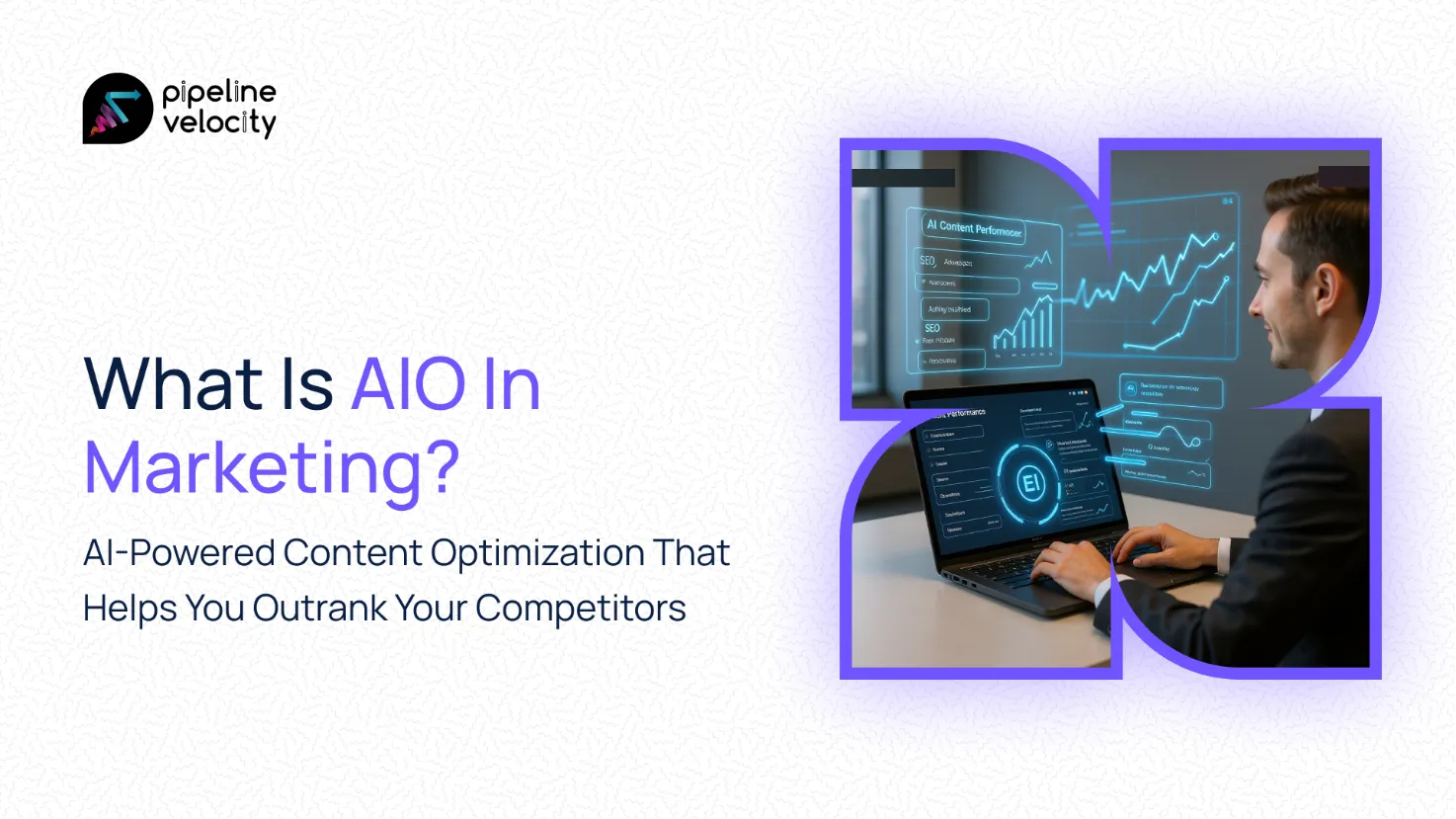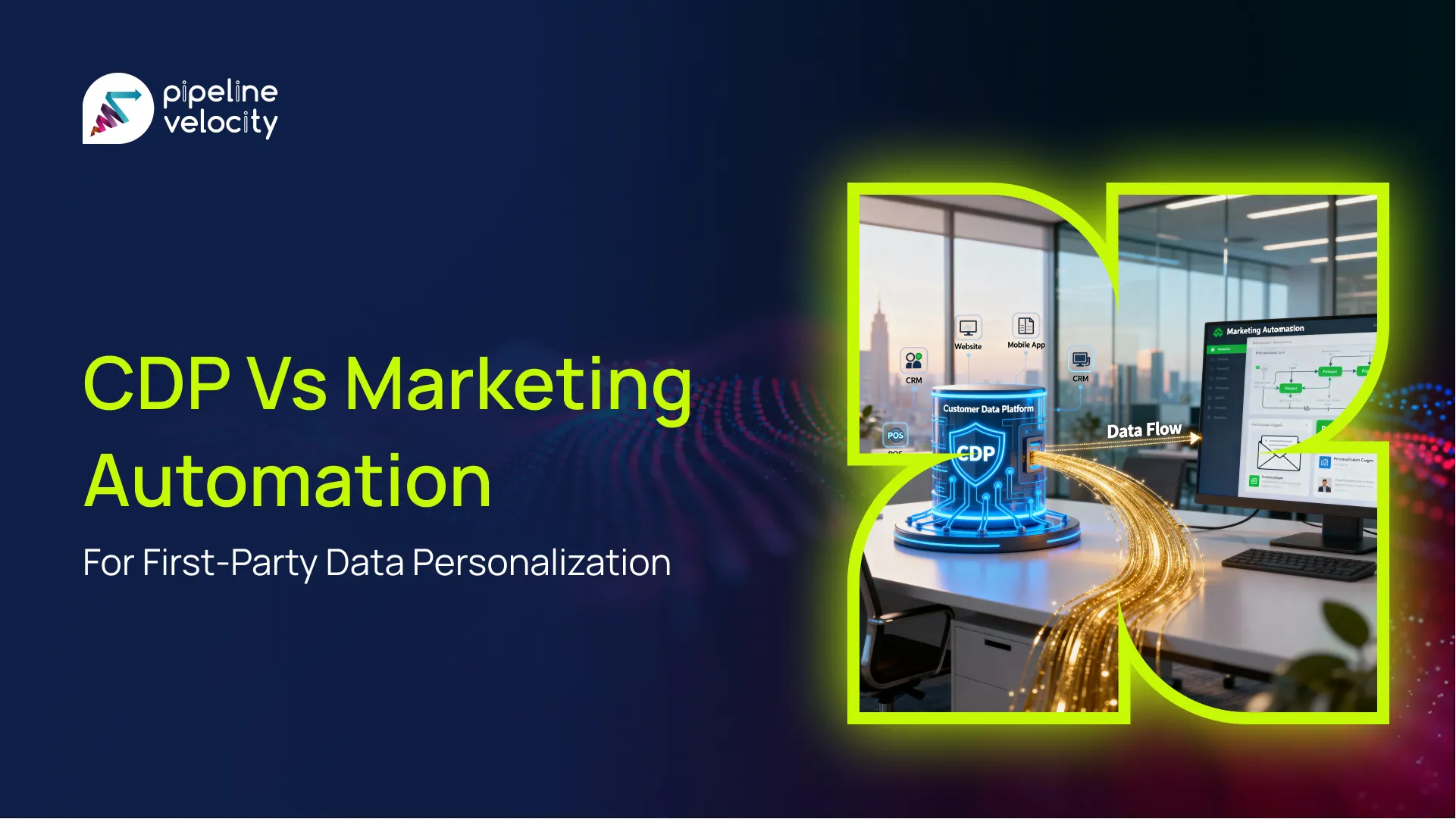Searches for “why SEO is dead” peak every time Google releases a core update, and more than half of queries now end without a click because rich snippets answer questions on the page. Generative AI tools such as ChatGPT, Gemini, and Claude scrape the open web and pull entire passages into answers that never send readers to a publisher. Brands that format content for these engines win citations, trust, and brand lift even when organic traffic stalls. Generative Engine Optimization, GEO, targets that opportunity by baking structure, context, and proven authority into every post.
Is SEO Dead or Just Changing
The debate flares on LinkedIn each quarter because marketers love bold declarations. Traditional SEO still matters, but it no longer delivers outsized gains on its own. Algorithms now weigh user intent, entity relationships, and content clarity more than keyword placement. Readers reward pages that solve intent in the first scroll, and engines mirror that behavior by boosting those pages. Brands that combine classic SEO hygiene with GEO structure stay ahead of every update.
What people mean when they say SEO is dead
Marketers who declare death usually watch traffic dip after a core update. They relied on backlinks, exact match domains, or keyword stuffing and ignored content depth. When Google or Bing changed weighting, rankings plunged. They call SEO dead when their playbook stopped working, not because search engines abandoned quality signals. Smart brands evolved and turned volatility into growth.
Why the debate keeps resurfacing
Every algorithm update resets winners and losers. Losers vent online and declare the channel over. Winners quietly harvest new traffic. The cycle repeats, feeding the myth that SEO lives and dies rather than adapts. GEO reframes the conversation by treating engines as consumers and builds information for them first.
Shifts in how search engines interpret content
Search engines once matched strings of text. Today they parse context, entities, and sentiment. They use knowledge graphs to understand relationships, and they rely on engagement signals to judge value. This shift punishes thin articles and rewards structured depth. Publishers must move from stuffing keywords to mapping topics with precision. The National Institute of Standards and Technology notes that AI models perform best when processors receive clear, labeled data, underscoring GEO’s focus on structure NIST.
Semantics over strings
Google’s RankBrain and BERT updates pushed natural language processing forward. The engine connects “how to fix a flat” with “tire repair steps” because semantics trump exact phrases. Writers must answer questions clearly in plain language rather than chase every synonym. Clarity turns into ranking power because the model finds and cites the best match.
User intent outranks keywords
Engines gauge intent through dwell time, scroll depth, and bounce rates. A page that satisfies curiosity keeps users longer and signals relevance. GEO frames each subheading as a question and answers it fast to capture that signal. Supporting visuals, tables, and links deepen engagement and reinforce intent matching. Our SEO Services team structures every post this way so engines and readers never guess the value.
Pipeline Velocity Accelerates GEO Success
Our services at Pipeline Velocity bridge the gap between classic optimization and modern discovery. The Revenue Marketing as a Service program bakes GEO elements into every campaign, turning visibility into measurable revenue. Clients receive schema audits, answer‑first rewrites, and integration with social discovery channels so content ranks and gets cited. Internal data shows a 32 percent lift in AI citations within three months for brands that adopt our framework. When engines look for authoritative answers, they find your brand first.
Search Is No Longer Just Google
Organic sessions now fragment across TikTok, YouTube, Reddit, and Amazon. Users treat social feeds like search bars, and each platform runs its own discovery algorithm. The journey rarely starts and ends on one site. Brands must chase attention where it lives, not where it lived five years ago. The Internal Revenue Service even publishes digital resource hubs so taxpayers can find answers without leaving the IRS domain, a government example of zero click efficiency IRS.
How TikTok, YouTube, and Reddit are replacing classic search
TikTok’s search function shows “how to” clips faster than a blog can rank. YouTube’s suggested videos outrank Google snippets for DIY queries. Reddit threads surface honest reviews that beat brand pages in credibility. Smart marketers re‑cut blog insights into vertical videos and community posts that meet users on each platform.
AI assistants and voice search dominance
Alexa, Siri, and Google Assistant read answers aloud, often citing just one source. Structured data helps your brand become that source. Voice answers favor concise, authoritative text blocks. Marketers should test voice queries and tweak content until assistants choose them.
The rise of curated answers over ranked results
Google’s Perspectives and Discussions tabs highlight community threads instead of the ten blue links. Users scroll curated highlights and skip pagination. Visibility now requires participation in conversations, not just position in results. GEO writes answers that stand alone and embed easily in these new panels.
How Generative AI Changed the Game
Large language models rewrite the distribution map. They generate answers on demand, quoting or paraphrasing existing articles without attribution if metadata is missing. Publishers who ignore schema become silent partners in those answers. GEO claims credit by labeling every key fact.
Why zero click results are now the norm
Featured snippets, People Also Ask boxes, and AI overviews satisfy curiosity before a click. Publishers lose traffic but gain visible authority when engines cite them. GEO aims for that citation because brand memory converts later. Being the quoted authority beats being an unseen rank two.
How AI overviews are built
Google’s AI Overview merges large language model outputs with search index snippets. It favors content segments tagged with schema markup because the model trusts structured sources. Pages that pre‑package clear answers dominate the overview carousel. Markup becomes the new backlink. Learn the full process in our Digital Marketing Complete Guide for hands‑on steps.
Why link based authority matters less
LLMs evaluate sentence clarity and topical completeness more than backlink graphs. They still respect reputable domains, but a concise, well‑structured answer on a newer site can outrank legacy brands. Authority now grows from usefulness, not just author profile.
How ChatGPT, Gemini, and Claude interpret site content
These models crawl public pages, strip ads, and parse HTML. They identify headings, lists, and tables, then convert them into vector embeddings. Clean markup signals professionalism, while clutter confuses parsing and lowers chances of citation. Frequent updates tell models the page remains trustworthy.
GEO Is the New SEO
Generative Engine Optimization treats AI, voice, and social algorithms as priority audiences. It backs user delight with machine readability. Structured depth makes information easy to lift, cite, and resurface. GEO aligns brand messaging with how engines package knowledge.
What is Generative Engine Optimization
GEO embeds schema, plain language summaries, and conversational subheads so machines can lift accurate text. It respects user flow while leading with machine readability. Every element, tables, lists, alt tags, works as modular data. Engines can cherry pick any snippet and showcase it.
Why GEO focuses on structure, not just keywords
A well labeled table answers fifteen related questions at once. Keywords help, but hierarchy and clarity guide engines faster. Structured answers beat perfect phrasing because models care about meaning. GEO turns every block into data points engines can trust.
How structured metadata boosts AI visibility
Schema.org, FAQ markup, and JSON LD tell crawlers where each answer lives. Engines trust labeled elements because they reduce ambiguity. Proper metadata also helps screen readers, reinforcing accessibility. Accessibility and visibility now move together.
The importance of citations in AI generated answers
When ChatGPT cites your brand, readers see authority even if they never click. Citations build brand memory and influence purchase research. They feed word of mouth as users quote your insights in other channels. Every citation widens the funnel outside web analytics.
SEO Tactics That No Longer Work
Search engines grow smarter every year, so yesterday’s shortcuts lose power. Cheap tricks now signal manipulation, not expertise. Violations lead to visibility drops that take months to reverse. Sustainable gains come from content substance, not loopholes.
Keyword stuffing and exact match obsession
Repeating a phrase or buying an exact match domain once tricked algorithms. Today it signals low quality and triggers penalties. Engines profile abusive keyword density with ease. Balanced, natural language outperforms brute repetition.
Chasing backlinks over user intent
A link from an irrelevant directory offers little trust. Engines weigh topical relevance and traffic quality more than raw volume. Intent alignment turns a single authoritative link into more value than fifty empty ones. Chase fit over count.
Focusing only on rankings instead of relevance
High rank means little if the answer fails the reader. Engines monitor pogo sticking, fast back to results clicks, and demote pages that disappoint. Relevance keeps users engaged across multiple sections. Engagement feeds future visibility cycles.
GEO Content Structure That Wins
Structure builds clarity for humans and machines. Reusable blocks let engines splice answers without miscontext. Dense formatting speeds scanning and drives dwell time. Each section becomes a self contained micro resource.
Clear question answer formats
Start each subtopic with the query in plain English. Follow immediately with a concise answer, then add depth. Engines lift the first sentences and cite your page. Readers appreciate the fast payoff and stay to explore details.
Schema, tables, and structured data use
Tables summarize specs or steps in tight rows that models digest easily. Adding schema markup labels the table and improves extraction accuracy. Lists outline sequences, and definition lists map entities. The page becomes a clean dataset.
Content summaries and conversational tone
Close sections with recaps that restate the main points. Summaries reduce ambiguity for models and reinforce memory for readers. Conversational tone keeps engagement high. High engagement equals strong behavioral signals. We demonstrate this approach in our article on Revenue Marketing Basics, which ranks for over two hundred related queries.
Embedded context and topical depth
Link to supporting posts that explore details. Context builds entity relationships, which models translate into authority. Outbound links to credible studies add third party validation. Depth beats surface level coverage every time.
The Role of Brand Authority in GEO
Authority drives trust signals across every engine. Recognition lowers the burden of proof when models choose citations. Brand equity translates into default selection. GEO turns authority into a technical asset, not just a reputation concept.
Why AI favors known entities
Models train on vast public corpora. Brands with consistent mentions in reputable sources become default authorities. Visibility snowballs because known names carry lower risk for engines. Repetition plus credibility equals first pick.
Building a reputation beyond rankings
Guest podcasts, quoted commentary, and social engagement seed your name across channels. Diverse mentions teach models that you matter. Offline citations in books and journals still feed training data. Authority lives wherever the model can read.
How to earn trust from engines, not just users
Use transparent authorship, cite data sources, and update content regularly. Engines reward freshness and verifiable expertise. Publicly correct errors to show accountability. Trust and transparency go hand in hand.
How To Optimize for Generative Engines
Optimization now happens at the structure and entity level. Machine comprehension becomes the gatekeeper to exposure. Aligning format with engine needs provides leverage no backlink can replicate. GEO turns content into flexible, machine ready inventory.
Aligning with LLM reading patterns
Models scan from top to bottom, prioritizing the first three hundred words. Place key facts early, then expand. Clear headings act as signposts for embedding vectors. The faster the model anchors context, the higher your citation odds.
Building FAQ rich, scannable content
FAQ blocks answer micro questions that AI overviews love. Each FAQ becomes a possible snippet. Group related FAQs near primary content to maintain topical coherence. Brevity in answers sparks lift without sacrificing depth.
Updating legacy content with fresh structure
Adding schema and rewriting intros lifts stale posts without starting over. Treat old content as a foundation, not a relic. Internal links funnel authority from legacy winners to new structures. Every refresh compounds value. Engage our Marketing Audit Service to prioritize high impact refreshes.
Monitoring how AI tools cite or use your content
Set up alerts for brand mentions in ChatGPT answers and Bing Copilot snippets. Evaluate how engines represent your expertise and refine gaps. Testing prompts in live tools reveals holes you need to patch. Continuous feedback loops fuel iterative gains.
Why GEO Requires a Mindset Shift
The metrics and goals evolve. Visibility now appears in many channels beyond clicks. Influence turns into the ultimate conversion driver. Teams must adjust objectives and celebrate new wins.
From keyword density to answer depth
Depth satisfies models that crave context. Thin pages fade fast. Rich subheadings and supportive media build multidimensional coverage. The best page becomes the knowledge hub.
From ranking to visibility
A citation inside an AI answer can outshine a number one listing because users see your brand first. Visibility across multiple surfaces multiplies trust. Presence now trumps position.
From traffic to influence
Influence drives direct searches and word of mouth, which escape analytics but fuel sales. Conversation presence and citation frequency replace pure session counts. Soft metrics become hard revenue when tracked over time.
Creating for Humans and Machines
Balance readability with structure. Human tone invites engagement; technical precision enables extraction. Both audiences must feel satisfied. When that happens, engines amplify your reach.
How to write with voice while optimizing structure
Lead with a clear, human sentence, then follow with bullet points or tables. Voice hooks readers; structure feeds engines. Anecdotes illustrate, but data anchors belief. Blend narrative and numbers for a complete experience.
Balancing tone with technical elements
Use conversational language but include concrete data. Numbers give engines facts to quote and give readers evidence to trust. Avoid jargon that hides meaning. Precision wins curiosity.
Creating content ecosystems, not just single posts
Interlink topical clusters so models map your authority across a subject. Clusters keep users within your domain longer. They also let engines grab related snippets without leaving your ecosystem. Ecosystems build defensible moats.
GEO Metrics That Matter
New dashboards track influence, not just clicks. Standard analytics platforms have not caught up, but workarounds exist. Smart brands track every mention they can find. They measure impact where users spend attention.
AI citation tracking and snippet appearances
Tools such as AlsoAsked and SparkToro monitor snippet presence. Frequent appearances indicate strong GEO health. Track which posts drive citations to refine formats. Iterate designs around the winning patterns.
Measuring engagement outside of click throughs
Watch branded search volume and social shares that cite your article. These signals show influence even when sessions stay flat. Mentions in newsletters and podcasts prove authority. Off site metrics carry equal weight.
Tools to watch for generative visibility
Look for features in platforms like Search Console, Bing Webmaster, and emerging GEO analytics suites that log AI pulls. Expect more vendors to release dashboards this year. Early adoption provides first mover insights. Monitor updates and adjust tracking plans often.
SEO Isn’t Dead, But It’s Not Enough
Traditional tactics still form the base but need reinforcement. Relying solely on them risks future exposure loss. Generative engines already influence buyer research. GEO plugs the gap before it turns into a crater.
Why relying on traditional SEO is risky
Algorithm volatility can erase gains overnight. A diversified approach hedges exposure. Generative engines shift traffic patterns faster than classic SERP updates. Brands without GEO feel the shock first.
How GEO prepares you for the next five years
LLM adoption will only grow. Early movers lock in authority while competition clings to old playbooks. GEO embeds adaptability into every post. Adaptability converts into market share over time. Our Fractional Marketing Team helps brands deploy this adaptable model without the overhead of full time hires.
Combining SEO, GEO, UX, and brand into one approach
Great content answers questions, loads fast, looks trustworthy, and carries clear structure. That blend wins across every surface. Alignment removes silos that slow execution. Unified teams react faster to change.
Transitioning Your Strategy
Change brings disruption but also opportunity. Start with a roadmap that phases in GEO without pausing current momentum. Each sprint upgrades assets and builds confidence. Progress compounds quickly.
Auditing your current content
Map every URL against topical clusters, schema presence, and AI citation status. Identify gaps and low hanging upgrades. Prioritize evergreen pages that already rank to maximize lift. Document wins to secure stakeholder buy in.
Structuring new content with GEO in mind
Draft outlines that list questions first. Design tables, lists, and summaries before writing prose. Assign schema types during planning, not after publication. Editorial and technical steps merge.
Educating your team on the shift
Hold workshops that show real examples of AI overviews. Visual proof accelerates buy in. Share dashboards tracking citations to gamify progress. Culture shifts when wins feel tangible.
Rethinking reporting metrics
Add AI citations, snippet presence, and branded search lift to your monthly dashboard. Tie those metrics to revenue impact. Clear attribution keeps executives invested. Reporting evolves alongside strategy.
What Winners in GEO Are Doing Differently
Early adopters show a clear pattern. They treat content as a product, not campaign filler. Architecture comes first, copy second. Everything points back to authority building.
Investing in content architecture
They build hubs and spokes that cover a topic completely, not scattered posts chasing isolated keywords. Architecture scales updates across families of pages. Engines map hubs easily and reward them. Well designed frameworks age gracefully.
Building real topical clusters
Clusters teach models how subtopics connect, boosting authority at the entity level. Each cluster contains cornerstone pieces, supporting deep dives, and quick answers. Internal links mirror user workflows. The structure feels natural, not forced.
Focusing on brand first, AI friendly storytelling
They embed storytelling that hooks readers while providing structured answers engines trust. Story adds human resonance that drives shares. Structure ensures machine understanding. Both together beat dull prose and messy code.
Final Thoughts on the Evolution of Search
Search did not die; it evolved. Engines demand clarity, context, and credibility. GEO provides those elements at scale while serving human readers with engaging narratives. Brands that adapt early hold the advantage.
Pipeline Velocity Solutions Keep You Visible
At Pipeline Velocity, we help you move from theory to traction. Our cross functional team integrates GEO best practices with paid media, email nurture, and conversion rate optimization so nothing leaks from the funnel. Clients see smoother handoffs between content and sales because every asset follows the same structured blueprint. We bundle schema implementation, prompt based content refreshes, and multi channel amplification so brand messages surface in search, chat, and social feeds. Explore a custom roadmap by booking a call through our Revenue Marketing as a Service page.
In summary…
Generative Engine Optimization transforms how brands secure visibility in AI driven search journeys. Below are the key shifts to remember:
- Classic loopholes have lost impact
- Keyword stuffing and bulk backlinks now trigger quality penalties rather than boosts
- Keyword stuffing and bulk backlinks now trigger quality penalties rather than boosts
- Structure outranks raw keyword counts
- Schema markup, tables, and clear question answer blocks guide engines directly to your answers
- Schema markup, tables, and clear question answer blocks guide engines directly to your answers
- Authority flows from trusted entities
- Consistent, cited expertise across channels lifts brand credibility and recall
- Consistent, cited expertise across channels lifts brand credibility and recall
- Success metrics extend beyond clicks
- Track AI citations, branded search lift, and social mentions to measure influence accurately
GEO layers on top of foundational SEO instead of replacing it. Adopt these principles today to future proof your content, protect your visibility, and stay ahead as engines evolve.
- Track AI citations, branded search lift, and social mentions to measure influence accurately
FAQs
Why do experts claim SEO is dead?
They often rely on outdated tactics and see traffic drops after updates, then blame the channel instead of their methods. Four algorithm updates per year now shift ranking factors faster than lagging strategies can adjust. Experts who adapt survive. Those who do not blame the medium.
How long does GEO optimization take to show results?
Most brands see AI citation gains within three to six months once schema and content structure improve. Early gains snowball as engines refine embeddings. Long term, GEO compounds just like classic SEO but at faster cycles. Momentum builds authority.
Do backlinks still matter in a GEO strategy?
Relevant backlinks help because they remain strong trust signals, but engines weigh clarity and authority more than raw link counts. A small pool of high quality links beats a mountain of spam. GEO prefers fewer yet better references.
Can small businesses compete in GEO against big brands?
Yes. Focused, well structured content on niche topics can earn citations even without massive domain authority. Small teams move faster, update pages more often, and build distinct expertise. Agility offsets scale.What tools help track GEO success?
Monitor Search Console for AI snippets, use BrandMentions for citation alerts, and test prompts in ChatGPT to see if your content surfaces. Also track vertical search tools like YouTube and Reddit analytics for indirect_mentions. The toolkit evolves in real time.





